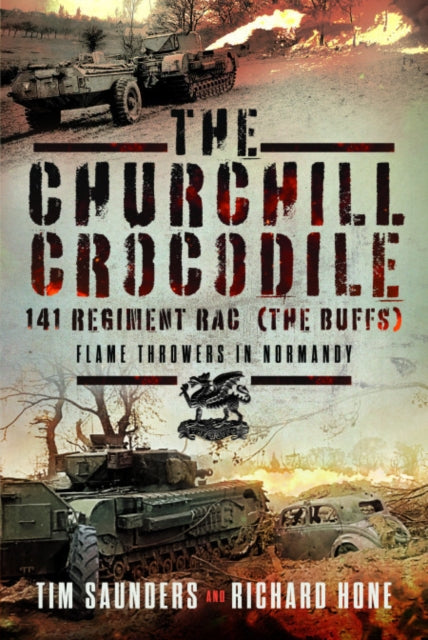The Churchill Crocodile, 14 Regiment RAC (The Buffs)
Usually shipped within 24 hours
UK deliveries from £5.95
Delivery & Returns
Delivery & Returns
We use the Royal Mail, DHL Express or UPS for our customers. For UK addresses, deliveries under 10kg are a standard £4.95 via Royal Mail Tracked 48 Service. For orders over 10kg and overseas customers, postage is calculated for you at checkout once you have entered your postal address. This price, does not include any potential custom charges that may apply, depending on the product or destination, as every country has very different import duties / taxes. Online exclusive products (such as trainers) will be delivered to you directly from the printer, separate from other items in your order, but your postage fee covers ALL items in your order.
If you are unhappy with your purchase, please email shop@tankmuseum.org within fourteen (14) working days of receiving your goods, and return it to us at the address below, in its original condition, unopened (with any seals and shrink-wrap intact) and we will issue you a full refund or replace it. Goods must be returned at your own cost. If the item is faulty, you do not need to return it, we will send you a replacement free of charge.
Description
Description
By Tim Saunders (Author) , Richard Hone
Hardback
The British Army started the development of flame throwers in 1938, but progress was slow and interest was side-lined after Dunkirk while the army reequipped. Investment in a flame-throwing tank only returned to the agenda thanks to interest by General Percy Hobart when he developed ‘funnies’ for 79th Armoured Division and the concept gained the support of General Sir Alan Brooke. 141 (The Buffs) Regiment RAC had been converted to Churchill Tanks at the end of 1941 and in early 1944 they were earmarked for another change of role to the Crocodile conversion of the new Mk VII Churchill tank.
This flame throwing system was secret and started to arrive with the regiment in April 1944. By D-Day only one squadron was equipped and trained, with space on the landing craft only available for two troops to land in support of 50th Division. The rest of the regiment arrived by the end of June and were in action with various formations across the front.
There followed a period of misuse by those they supported and learning on the job by the regiment’s squadrons, but by the middle of the campaign a clear doctrine for the use of the Crocodile had emerged and they were in great demand.
![The Churchill Crocodile, 14 Regiment RAC (The Buffs) Book [variant_option4]](http://tankmuseumshop.org/cdn/shop/files/9022Spearpoint4_cc2641c8-ce0d-4c65-b2ea-46657f7ddb5e.jpg?v=1748338133&width=1214)

![The Churchill Crocodile, 14 Regiment RAC (The Buffs) Book [variant_option4]](http://tankmuseumshop.org/cdn/shop/files/9022Spearpoint4_cc2641c8-ce0d-4c65-b2ea-46657f7ddb5e.jpg?v=1748338133&width=88)
![Tank Museum Playing Cards Game [variant_option4]](http://tankmuseumshop.org/cdn/shop/files/ProductShoot_10_10_2025035.jpg?v=1760358498&width=176)
![Tank Museum Wrapping Paper - White - Two sheet pack Wrapping Paper [variant_option4]](http://tankmuseumshop.org/cdn/shop/products/Wrapp_Paper_All.jpg?v=1748337915&width=176)
![The Churchill Crocodile, 14 Regiment RAC (The Buffs) Book [variant_option4]](http://tankmuseumshop.org/cdn/shop/files/9022Spearpoint4_cc2641c8-ce0d-4c65-b2ea-46657f7ddb5e.jpg?v=1748338133&width=640)



